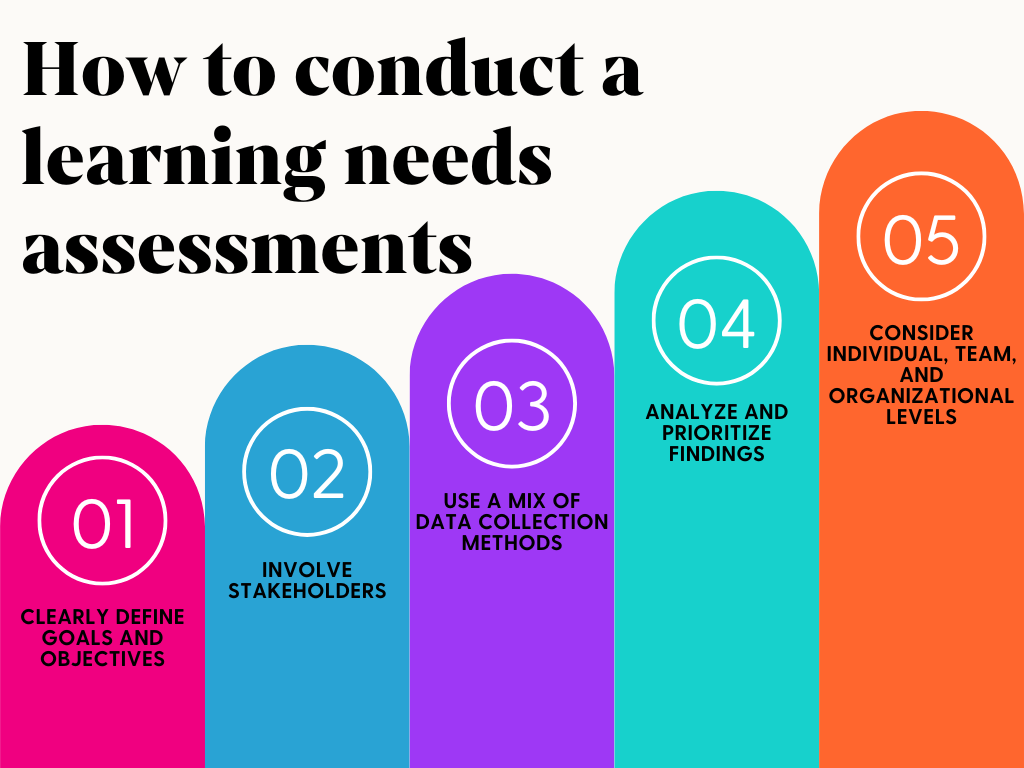
If you are considering buying an LMS, it’s critical that you know why. You may feel you need one. You may have even been told to go find one. But that’s not enough. When the time comes to actually put the company’s money on the table to pay for one, the scrutiny will begin. Get in front of the questions by executing a learning needs assessment.
A learning needs assessment will give you the answers to why you need an LMS from all perspectives of the business. You’ll uncover data in the process to support these reasons. You’ll use research from external parties and the vendors you are working with to learn about the cost-savings associated with an LMS. Pulling this information together will fortify your pitch.
Clearly Define Goals and Objectives: Before you begin the assessment, ensure you have a clear understanding of the organization’s goals and objectives. This will help you align the assessment with the overarching objectives and ensure that the identified learning needs contribute to the organization’s success.
→ Need some inspiration? Reach out to us. We’ve already done the work by industry. It will give you a start.
Involve Stakeholders: Engage relevant stakeholders such as managers, employees, subject matter experts, and executives. Their insights will provide a well-rounded perspective on the skills and knowledge gaps that need to be addressed. Involving stakeholders also increases buy-in and support for the assessment outcomes.
→ You may feel overwhelmed by this. We understand so pulled together some of the questions you might consider asking.
Use a Mix of Data Collection Methods: Utilize a variety of data collection methods to gather comprehensive information. Methods could include surveys, interviews, focus groups, performance evaluations, and analyzing existing documentation and performance metrics. This multi-method approach helps capture diverse viewpoints and provides a more accurate picture of learning needs.
→ Need help getting started with your survey? Use a simple survey tool like SurveyMonkey, Microsoft Forms, or Google Forms with the questions we have in the list referenced above. Now you are on your way!
Analyze and Prioritize Findings: Once you’ve collected the data, carefully analyze it to identify common themes, trends, and patterns. Prioritize the learning needs based on their relevance to the organization’s goals, the frequency of occurrence, and the potential impact on performance. Not all identified needs will have equal priority, so focus on those that will yield the most significant benefits.
→ We get it. Everything is a priority. Let us help you with that. Our team of experts does it for customers everyday .Try us out.
Consider Individual, Team, and Organizational Levels: Learning needs assessments should address needs at different levels – individual, team, and organizational. Individual needs pertain to specific skill gaps employees require for their roles. Team needs might involve collaborative skills or communication improvement. Organizational needs could relate to larger-scale competencies required for the organization’s strategic growth.
→ Stay calm. We can help. Consider chatting with one of our implementation experts about creating a learning hierarchy.
Remember, a learning needs assessment is an ongoing process. Regularly review and update the assessment results to ensure that learning plans remain aligned with the evolving needs of the organization and its workforce.
